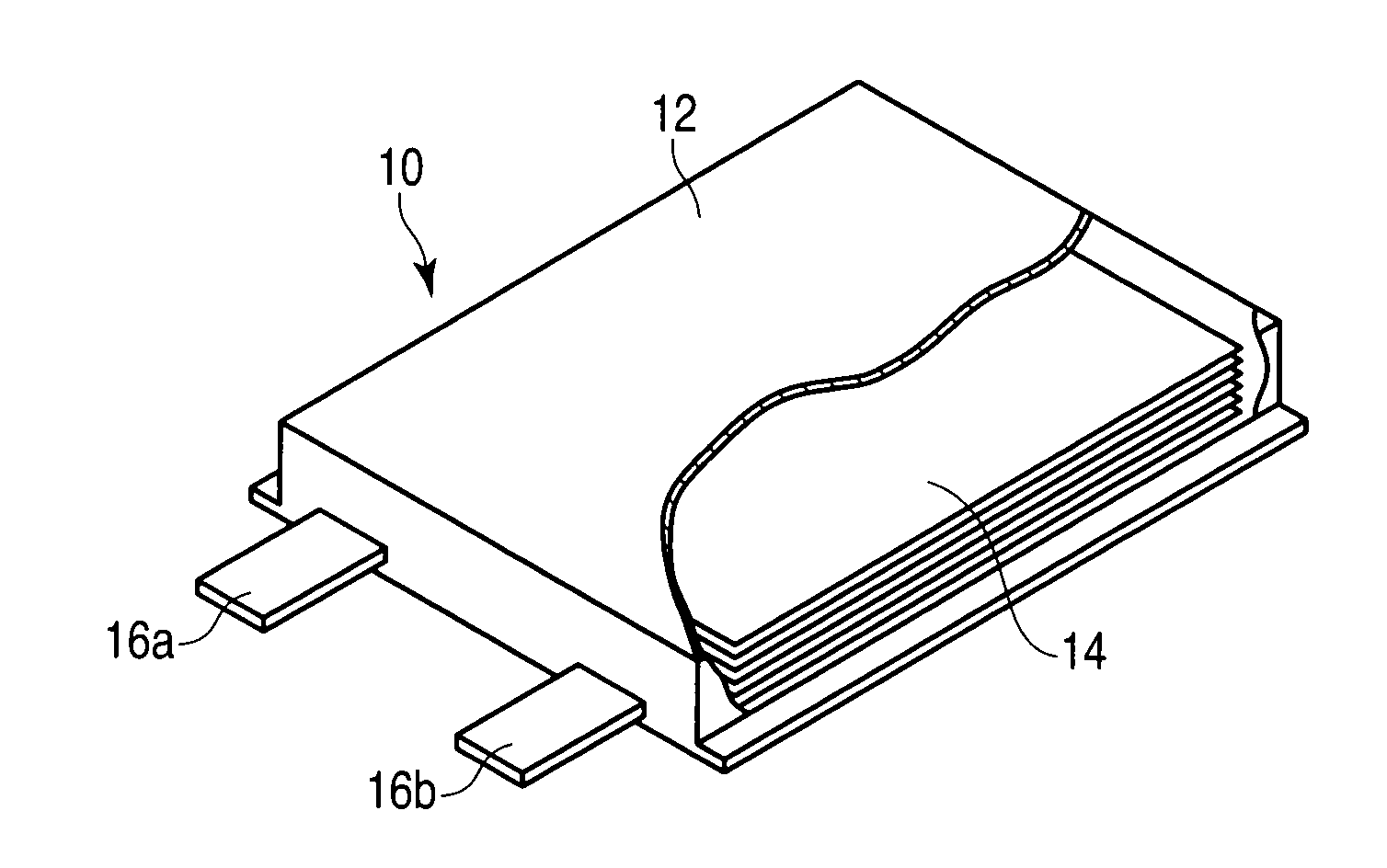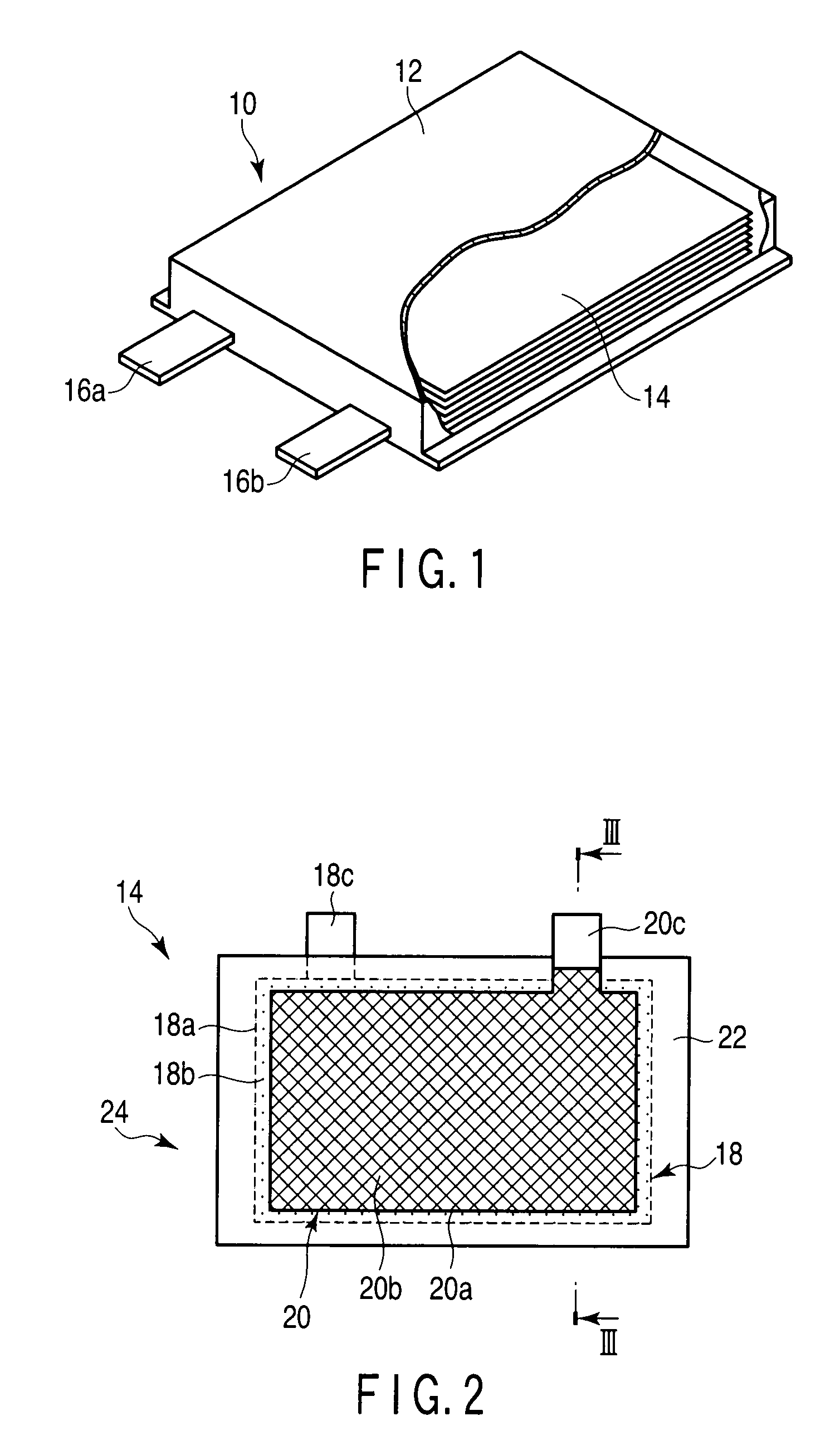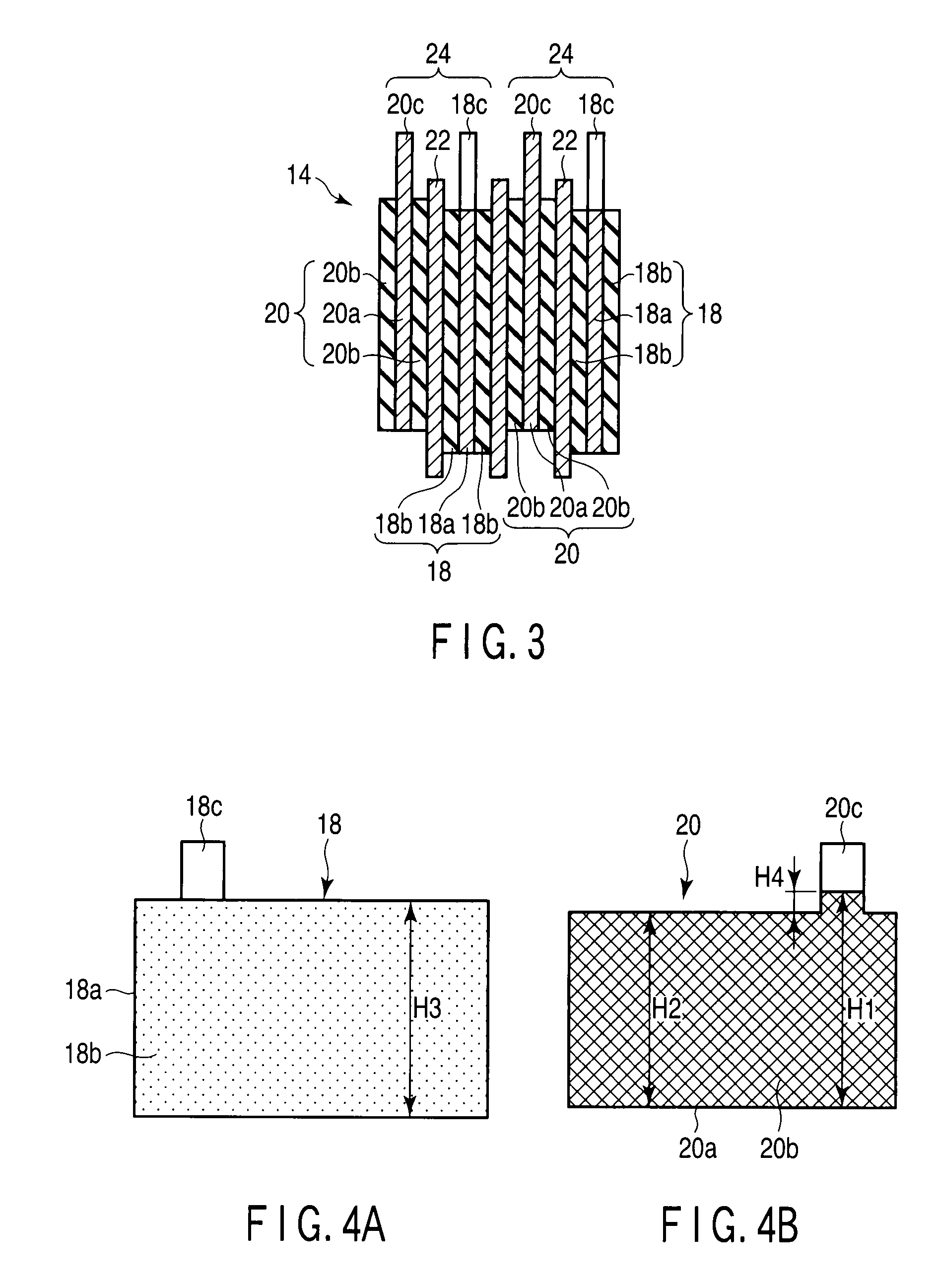Non-aqueous electrolyte secondary battery, electrode used for secondary battery, and method of manufacturing electrode
a technology of non-aqueous electrolyte and secondary batteries, which is applied in the direction of cell components, final product manufacturing, sustainable manufacturing/processing, etc., can solve the problems of low mechanical strength of the tab, electrode strain, and rapid reduction of the battery capacity from the normal level, so as to prevent the capacity from being reduced, reduce defects, and high power
- Summary
- Abstract
- Description
- Claims
- Application Information
AI Technical Summary
Benefits of technology
Problems solved by technology
Method used
Image
Examples
first embodiment
[0126]FIGS. 9A, 9B, 10A, and 10B are schematic views showing an electrode to be used in a laminated electrode group, and a manufacturing step thereof.
[0127]As shown in FIGS. 9A and 9B, both surfaces of rectangular metallic foil excluding the circumferential edge part thereof are coated with slurry containing the active material, are thereafter dried, and are then pressed in the thickness direction of the coated part, whereby active material-coated parts (active material-containing layers) 2a and 2b are formed on both surfaces of the central part of the metallic foil 1. The part at which the metallic foil 1 is exposed, and which surrounds the active material-coated part 2a or 2b is an uncoated part 3.
[0128]As shown in FIG. 9B, the coating position of the active material-coated part 2a formed on one surface of the metallic foil 1 is deviated from the coating position of the active material-coated part 2b formed on the opposite surface of the metallic foil 1, and the deviation amount d...
second embodiment
[0135]FIGS. 11 and 12 are schematic views showing an electrode used in the rolled-up electrode group, and a manufacturing step thereof.
[0136]As shown in FIG. 11, both surfaces of the elongated belt-like metallic foil 1 excluding the both side edge parts in the longitudinal direction, and the one short side part are coated with slurry containing an active material, and thereafter the resultant is dried, whereby active material-coated parts (active material-containing layers) 2a and 2b are formed. A part at which the active material-coated parts 2a and 2b are not formed, and the metallic foil 1 is exposed is called an uncoated part 3. At the uncoated part 3a with a larger width of the two uncoated parts 3a and 3b positioned at both side edge parts of the metallic foil 1, a plurality of tabs 5 are formed in the cutting step to be described later.
[0137]The coating position of the active material-coated part 2a formed on the one surface of the metallic foil 1 is deviated from the coating...
third embodiment
[0143]In the first and second embodiments described previously, in the tab 5, the two sides Y opposed to each other may be inclined at an angle θ exceeding 90° toward the side edge (side parallel with the rolling direction) L of the electrode main body 4 as shown in FIG. 13. The tab 5 including such two sides Y has a trapezoidal shape, and a width of the proximal end part X thereof becomes larger than a width of the distal end thereof. Accordingly, it becomes possible to prevent the electrode from being cut with the joint part of the tab 5 being a starting point, and handle the electrode easily when the electrode is treated to manufacture the rolled-up electrode group. Further, each of both corner parts of the proximal end part of the tab is formed into a rounded shape. In this case, it is possible to further improve the strength of the tab 5.
[0144]The electrode 7 for the secondary battery described above can be applied to a non-aqueous electrolyte battery electrode.
[0145]As the met...
PUM
| Property | Measurement | Unit |
|---|---|---|
| Angle | aaaaa | aaaaa |
| Power | aaaaa | aaaaa |
| Width | aaaaa | aaaaa |
Abstract
Description
Claims
Application Information
 Login to View More
Login to View More - R&D
- Intellectual Property
- Life Sciences
- Materials
- Tech Scout
- Unparalleled Data Quality
- Higher Quality Content
- 60% Fewer Hallucinations
Browse by: Latest US Patents, China's latest patents, Technical Efficacy Thesaurus, Application Domain, Technology Topic, Popular Technical Reports.
© 2025 PatSnap. All rights reserved.Legal|Privacy policy|Modern Slavery Act Transparency Statement|Sitemap|About US| Contact US: help@patsnap.com



